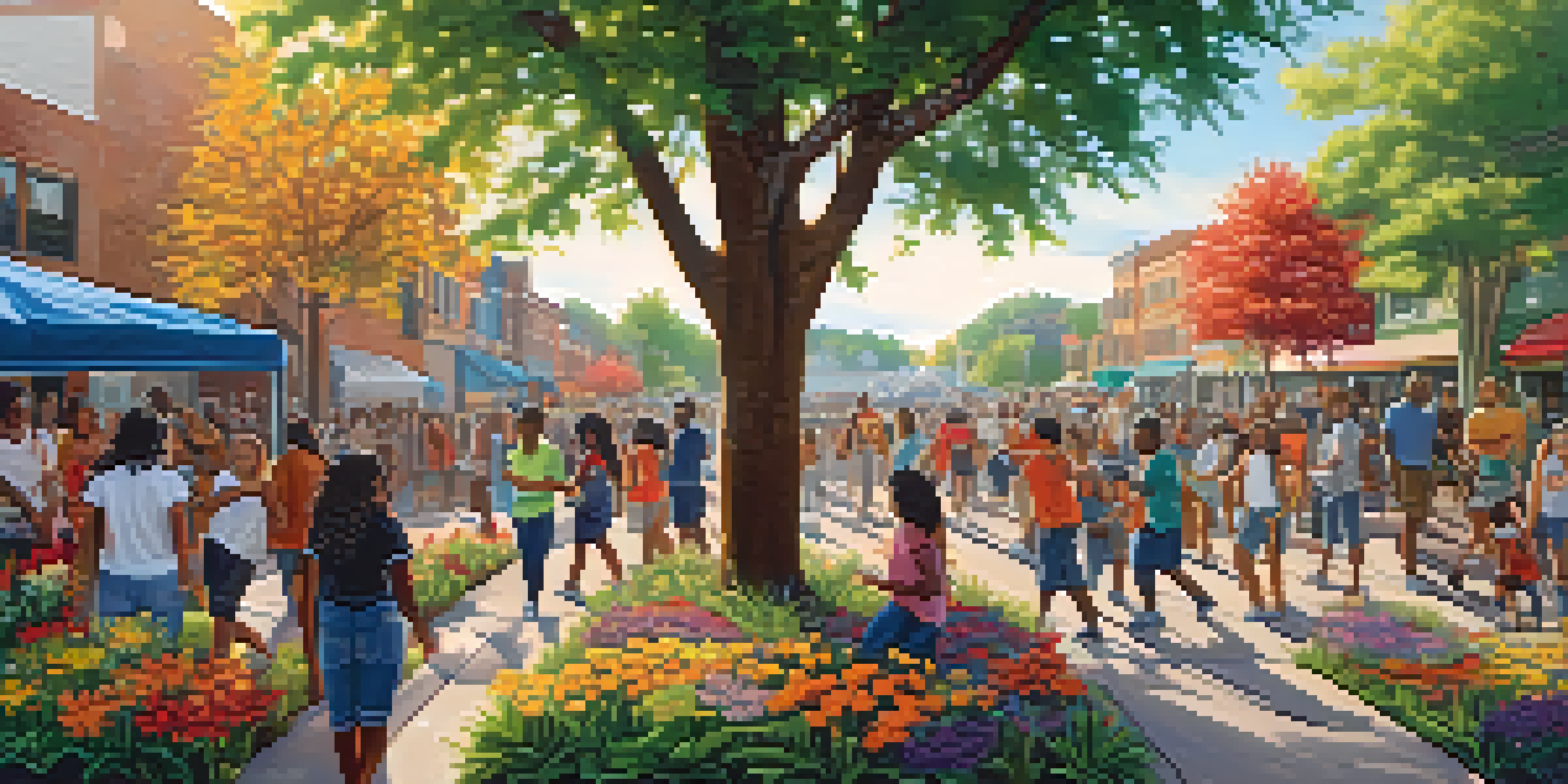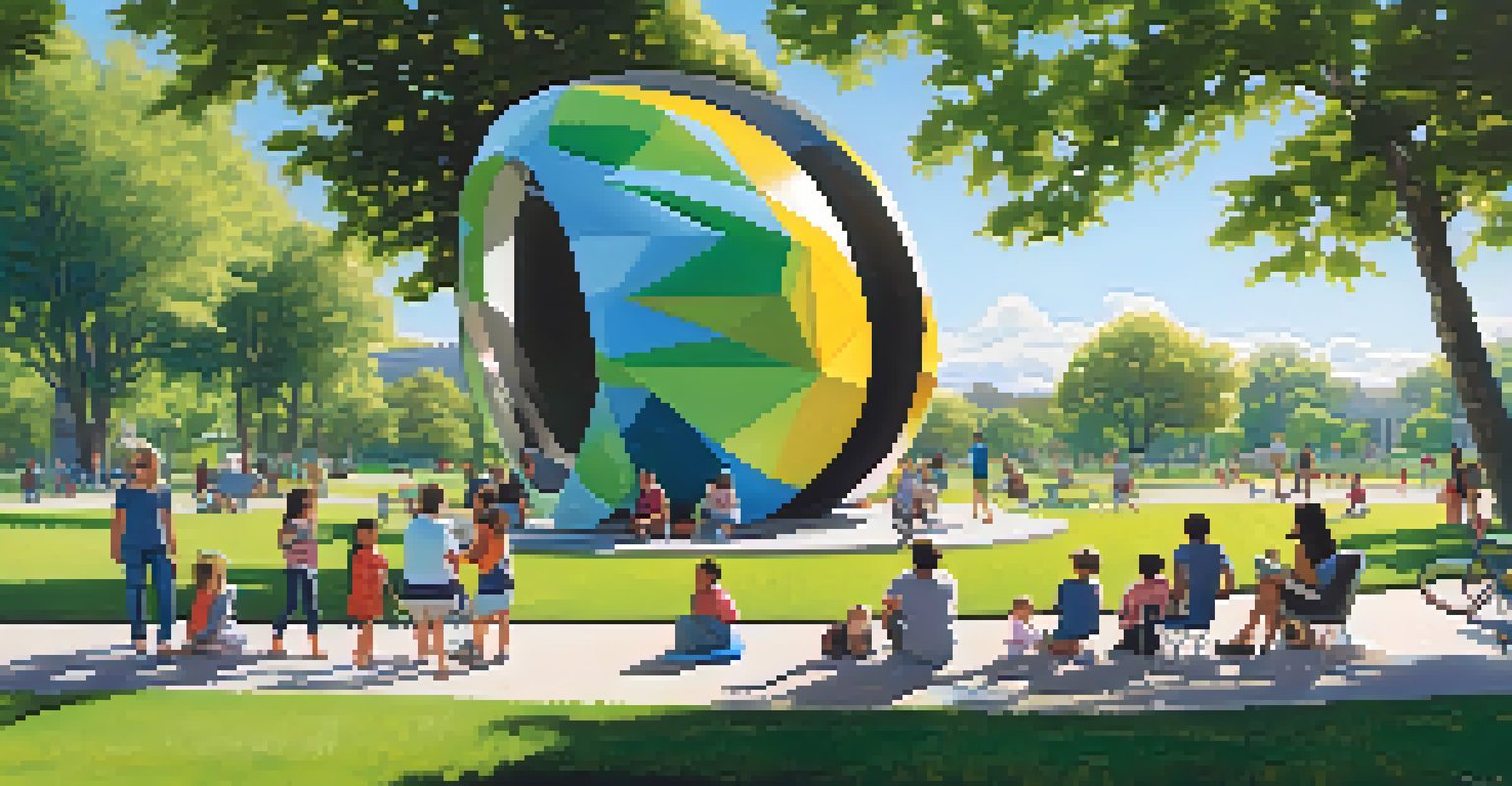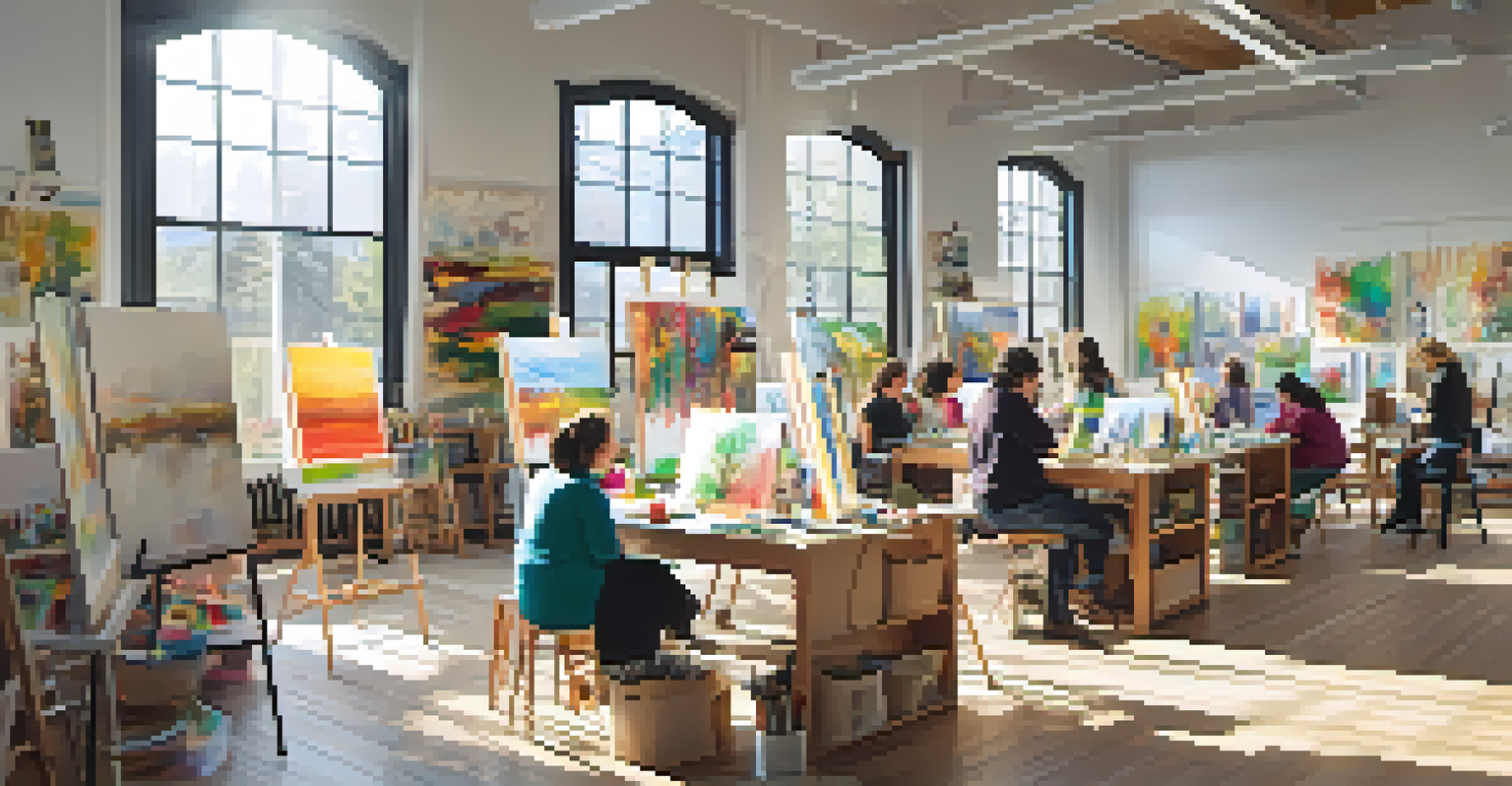The Role of Art in Promoting Social Cohesion in Communities

Art as a Universal Language of Connection
Art transcends language barriers, allowing individuals from different backgrounds to communicate and connect. This shared expression creates mutual understanding, which is essential for social cohesion. When people come together to appreciate or create art, they often discover common values and experiences, fostering a sense of belonging.
Art is the most beautiful of all lies; it is the truth that we want to see.
For example, community murals often depict shared histories or aspirations, inviting dialogue among residents. These artistic expressions encourage collaboration and participation, making everyone feel invested in their community’s narrative. As a result, art becomes a bridge that links diverse individuals, enhancing social ties.
Moreover, art encourages empathy by allowing people to see the world from various perspectives. When individuals engage with different artistic styles or cultural traditions, they gain insights into the lives of others, nurturing respect and compassion. This shared understanding is crucial for building a cohesive community.
Community Art Projects: Uniting People Through Creation
Community art projects serve as a powerful platform for collective creativity and collaboration. These initiatives invite participation from all community members, regardless of their skills or backgrounds. When individuals work together on a shared artistic endeavor, they not only produce something beautiful but also strengthen their social bonds.

Take community gardens that incorporate art installations as an example; they can transform a neglected space into a vibrant hub for interaction. Residents collaborate on planting, designing, and maintaining the garden while simultaneously creating art that reflects their collective identity. This process fosters a sense of ownership and pride, reinforcing community ties.
Art Connects Communities
Art transcends language barriers, fostering mutual understanding and social cohesion among diverse individuals.
Additionally, such projects often encourage dialogue about important social issues, allowing communities to address challenges collectively. By engaging in these artistic expressions, they develop a deeper understanding of one another’s perspectives, ultimately leading to a more united and resilient community.
Art Festivals: Celebrating Diversity and Togetherness
Art festivals play a significant role in promoting social cohesion by showcasing the diverse talents within a community. These events bring people together to celebrate culture, creativity, and shared experiences. When individuals from various backgrounds gather to enjoy art, music, and performances, they create a festive atmosphere that fosters connection.
Creativity takes courage.
For instance, local art festivals often feature performances and displays from different cultural groups, highlighting the richness of diversity. Attendees have the opportunity to learn about and appreciate different traditions and artistic expressions. This celebration of diversity not only enriches the community but also cultivates respect and understanding among its members.
Moreover, art festivals can inspire collaboration among local artists and organizations, leading to lasting partnerships. As artists share their work and engage with audiences, they often find common ground, paving the way for future projects that further enhance community cohesion.
Art as a Catalyst for Social Change
Art has the power to challenge societal norms and provoke thought, making it an essential tool for social change. Artists often use their platforms to address pressing issues, sparking conversations that can lead to community action. This ability to inspire change is fundamental in promoting social cohesion, as it encourages communities to unite around common goals.
For example, street art and protest art have been used globally to address issues such as inequality and injustice. These forms of expression not only raise awareness but also mobilize communities to take collective action. When individuals come together to support a cause through art, they strengthen their connections and foster a sense of purpose.
Community Projects Foster Togetherness
Collective art initiatives encourage collaboration, strengthen social bonds, and address important social issues.
Additionally, engaging with art that addresses social issues can help individuals process their emotions and experiences. This shared journey can create a sense of solidarity, as people realize they are not alone in their struggles. Ultimately, art becomes a unifying force that empowers communities to advocate for change together.
Art in Public Spaces: Accessibility and Engagement
Public art plays a crucial role in making art accessible to everyone, regardless of socioeconomic status. By placing art in communal spaces, communities invite engagement from all residents. This accessibility not only democratizes art but also encourages diverse participation, fostering social cohesion.
Consider how sculptures, murals, or installations in parks and plazas can become gathering points for community interaction. These spaces often inspire spontaneous conversations and connections among strangers, creating a vibrant social atmosphere. When people feel welcomed in these spaces, they are more likely to engage with one another, building a sense of belonging.
Moreover, public art can reflect the community's identity and values, reinforcing pride among residents. When individuals see their stories and cultures represented in public art, it fosters a sense of ownership and connection to their surroundings. This shared identity is vital for building strong, cohesive communities.
The Therapeutic Role of Art in Community Well-being
Art therapy has shown immense potential in promoting individual and community well-being. Engaging in creative activities can help individuals express their emotions, cope with stress, and build resilience. When communities embrace art as a therapeutic tool, they foster a supportive environment that nurtures social cohesion.
For instance, community art workshops often provide a safe space for individuals to explore their feelings and experiences. These sessions can serve as a form of healing, allowing participants to connect with one another through shared vulnerabilities. This emotional bonding strengthens social ties and helps build a more empathetic community.
Art as a Tool for Social Change
Art challenges societal norms and mobilizes communities around common goals, enhancing connections and solidarity.
Additionally, incorporating art into community programs can enhance mental health and well-being. By creating opportunities for creative expression, communities can address issues such as isolation and anxiety. As individuals engage with art together, they cultivate a sense of belonging that is essential for a cohesive society.
Education and Art: Building Future Cohesion
Integrating art into education can play a vital role in fostering social cohesion among future generations. By exposing children to diverse artistic expressions, they learn to appreciate different cultures and perspectives. This early exposure can shape their understanding of community and belonging, promoting inclusivity.
Schools that prioritize arts education often encourage collaboration and teamwork through projects and performances. These experiences allow students to learn from one another, building friendships and social skills that extend beyond the classroom. As they work together on creative endeavors, they develop a sense of unity that can last a lifetime.

Moreover, art education can empower students to express their identities and experiences. By providing a platform for self-expression, schools foster confidence and understanding among students. This foundation of empathy and respect is crucial for cultivating a cohesive community in the future.